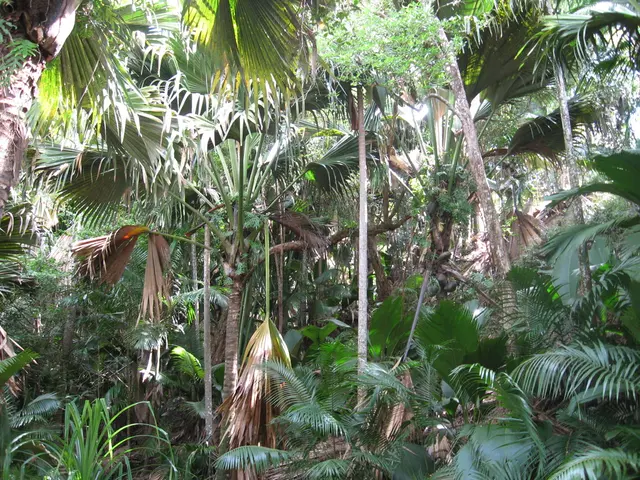Transforming secondary school students into scientist researchers
Sick Schools: Harnessing the Power of Youth to Tackle Disease Epidemics
Schools aren't just hotbeds for academic growth, they're also breeding grounds for infectious diseases. But what if we could harness the potential of those same energetic young minds to help combat these outbreaks? That's exactly what Andrew Conlan, a mathematician from the University of Cambridge, endeavored to do. Conlan's mission? To combine education and real-world problem-solving by turning schoolkids into disease detectives.
Conlan's research was part of the Motivate Project, an initiative aimed at showing kids how math can be applied to real-life issues. In this program, working professionals like Conlan engaged with students through videoconferences, offering a unique chance to interact with top mathematicians and swap ideas. But Conlan's efforts didn't stop there - he took things to the next level, enlisting secondary school students (ages 13 to 15) as research assistants.
Together, they designed questionnaires to study how primary school students interact with each other. These social patterns have rarely been studied in such a systematic, quantitative way, yet they're crucial to understanding how diseases like chickenpox and the flu spread through this vulnerable group. The younger students' responses were then collected by their older counterparts, effectively transforming them into field scientists.
"Initially, the kids were a bit puzzled about why we were so interested in gathering this information," Conlan explains. "But as they started collecting their own data, building their own networks, and considering how diseases might spread, they became increasingly engaged and excited."
Timing played a crucial role, too. During the second year of the project, a global H1N1 swine flu pandemic emerged. "This brought a whole new dimension to the project, making the relevance of their data crystal clear," Conlan notes.
The project was a resounding success. In under two years, the secondary schoolers sampled 75 complete primary school classes from 11 different schools, achieving nearly a 90% response rate. While the findings weren't groundbreaking, the study's sheer scope and detail set a new standard in this field.
"The children were more than capable of grasping the complex concepts involved in disease epidemiology and the use of mathematical models to describe those diseases," says Conlan. "Their dedication, time, and effort were essential to the project's success."
Schoolchildren have long been underestimated, but thankfully, initiatives like the Motivate Project and 'I'm a Scientist, Get Me Out of Here!' are changing the game. These programs treat kids not as passive recipients but as active participants in the learning process, fostering a new generation of curious, intelligent minds.
Conlan agrees, emphasizing the importance of nurturing the next generation of scientists. "In this era of budget cuts and rising tuition fees, it's vital to communicate what we do and to encourage young people to consider careers in academia."
Sources:
- Human mobility drives seasonal influenza transmission dynamics (medRxiv preprint)
- ESWI Activities - European Scientific Working group on Influenza (ESWI)
- Pandemic Agreement - World Health Organization (WHO)
Related Articles:
- The Roots of the Gender Gap in Maths: Social Factors, Not Biology
- Good Teachers Help Students Realize Their Genetic Potential in Reading
- Simple Writing Exercise Breaks the Cycle That Holds Back Black Students
- Teaching Scientific Knowledge Doesn't Improve Scientific Reasoning
- When Learning Maths, Abstract Symbols are More Effective Than Real-World Examples
- By combining education and real-life problem-solving, Andrew Conlan's research in the Motivate Project demonstrates how mathematics can be applied to health-and-wellness issues, such as disease epidemics.
- The Motivate Project, which engages students in science through videoconferences with professionals and turning them into disease detectives, also fosters personal growth, learning, and mental health by fostering a new generation of curious, intelligent minds.
- In the Motivate Project, secondary school students, ages 13 to 15, were enlisted as research assistants to study social patterns among primary school students, contributing to education-and-self-development by understanding how diseases like chickenpox and the flu spread through this vulnerable group.
- The success of initiatives like the Motivate Project and 'I'm a Scientist, Get Me Out of Here!' serves as a testament to the capability of schoolchildren and their potential contributions to science, fitness-and-exercise, mental-health, and learning, altering perceptions of their role in solving complex real-world problems.





